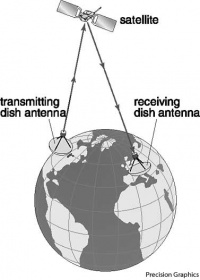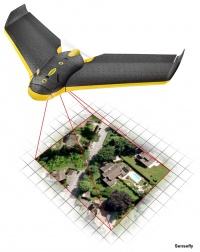Difference between revisions of "Types of Imagery"
| Line 5: | Line 5: | ||
In imagery resolution represents the amount of area each pixel of an image covers. For example, an image with 1 meter resolution means that each pixel in the image is the width and height of 1 meter, this means any objects which are smaller than a meter will not be visible in an image. The smaller the resolution = the higher amount of detail an image will have. Low resolution imagery however is excellent for use over large areas and looking at more general patterns and datasets. If a map is needed with an image over a district, a lower resolution image would be better than a very high resolution image. However, when looking at specific areas such as a specific SHA or CHA, high resolution imagery is needed. | In imagery resolution represents the amount of area each pixel of an image covers. For example, an image with 1 meter resolution means that each pixel in the image is the width and height of 1 meter, this means any objects which are smaller than a meter will not be visible in an image. The smaller the resolution = the higher amount of detail an image will have. Low resolution imagery however is excellent for use over large areas and looking at more general patterns and datasets. If a map is needed with an image over a district, a lower resolution image would be better than a very high resolution image. However, when looking at specific areas such as a specific SHA or CHA, high resolution imagery is needed. | ||
| − | [[Image:Switerland google earth clip example of raster resolution.jpg|650px]] | + | [[Image:RASTER Example.png|350px]] [[Image:Switerland google earth clip example of raster resolution.jpg|650px]] |
==Satellite imagery or UAV/UAS imagery==__NOEDITSECTION__ | ==Satellite imagery or UAV/UAS imagery==__NOEDITSECTION__ | ||
Latest revision as of 11:29, 11 August 2016
When deciding which type of imagery to use there a few factors to consider.
Resolution
In imagery resolution represents the amount of area each pixel of an image covers. For example, an image with 1 meter resolution means that each pixel in the image is the width and height of 1 meter, this means any objects which are smaller than a meter will not be visible in an image. The smaller the resolution = the higher amount of detail an image will have. Low resolution imagery however is excellent for use over large areas and looking at more general patterns and datasets. If a map is needed with an image over a district, a lower resolution image would be better than a very high resolution image. However, when looking at specific areas such as a specific SHA or CHA, high resolution imagery is needed.
Satellite imagery or UAV/UAS imagery
It’s important to consider what is available to you and which types are more feasible for your operations.
Satellite imagery
Satellite imagery is available to the global community with costs varying between providers. Archival imagery (imagery not obtained the day of request or planned in future tasking’s) is often discounted by imagery providers, so if you can use an image that is a few days old or even a year or more older the costs to obtain that image are significantly reduced. Also the benefit of satellite imagery is that the image provider will pre-process the imagery so you will be able to immediately use it in your GIS with no preparation required on your part. You can also obtain satellite imagery in many different resolutions both high and low.
UAV imagery
Unmanned Aerial Vehicles (UAV’s) are used as part of a Unmanned Aerial System (UAS) which is a software system that enables the user to process and use the imagery obtained from a UAV. This can often be the cheaper solution and in many cases the most efficient, UAV’s are quick and easy to set up and can obtain current imagery of an area within minutes. For field operations where wait times for imagery are limited this can be a good solution. However UAS require the users to process their imagery, either through software provided with the UAS or manually by a GIS operator. Many UAS have the image processing software included though. Resolution of a UAS image will vary based on what parameters are set by the operator, but in all cases will be high resolution. UAS imagery will only cover a limited area, and will not be able to provide imagery of an entire district or country in one operation. UAS are often used for specific areas with the range limited to the abilities of the UAV being used.
| |||||||||||



